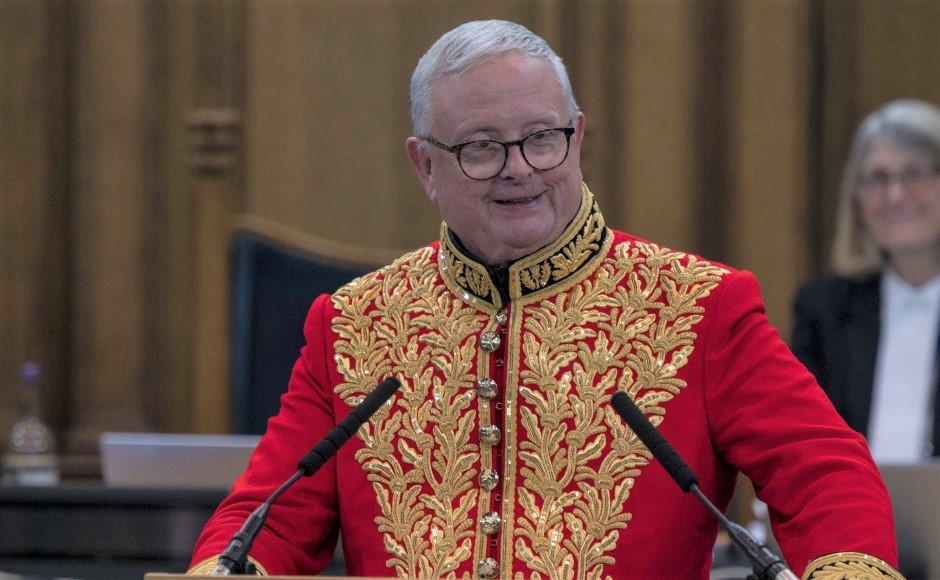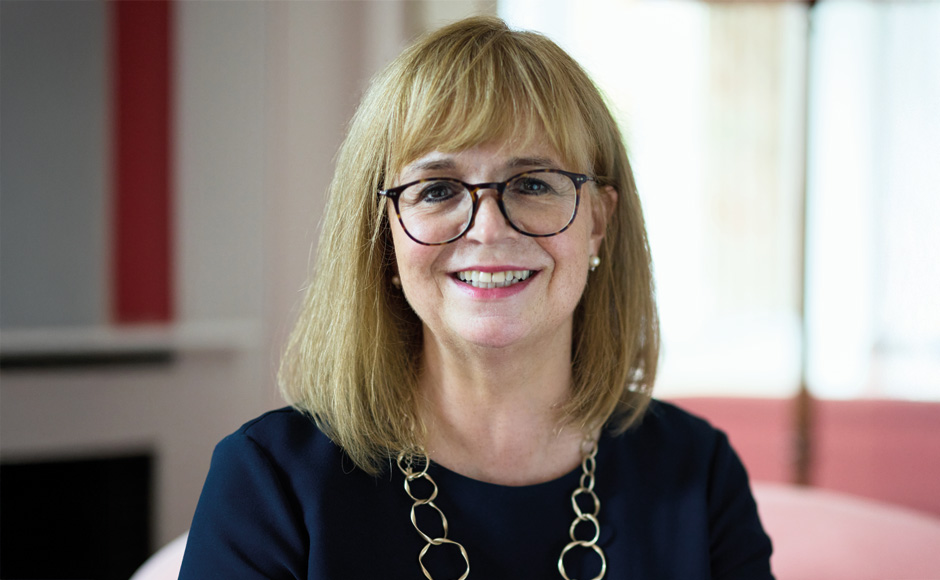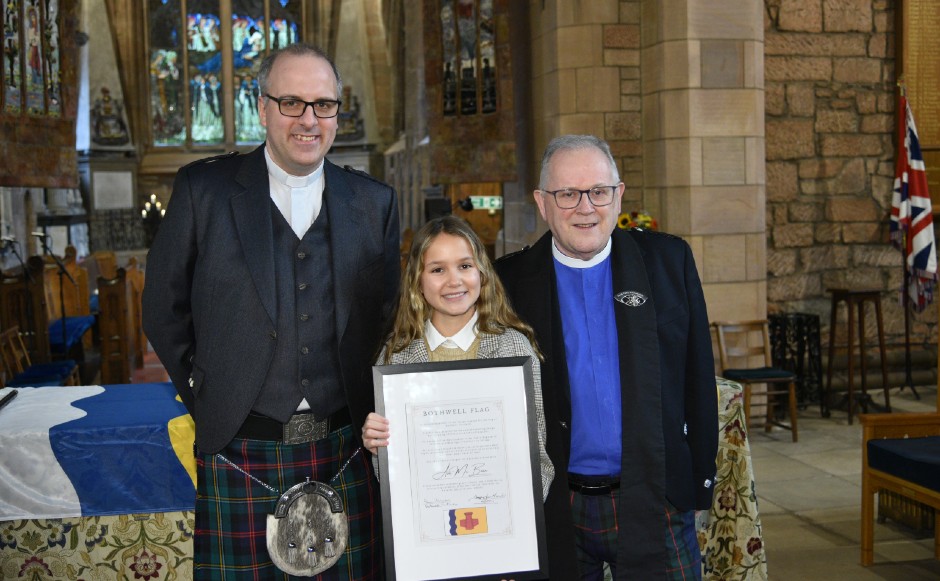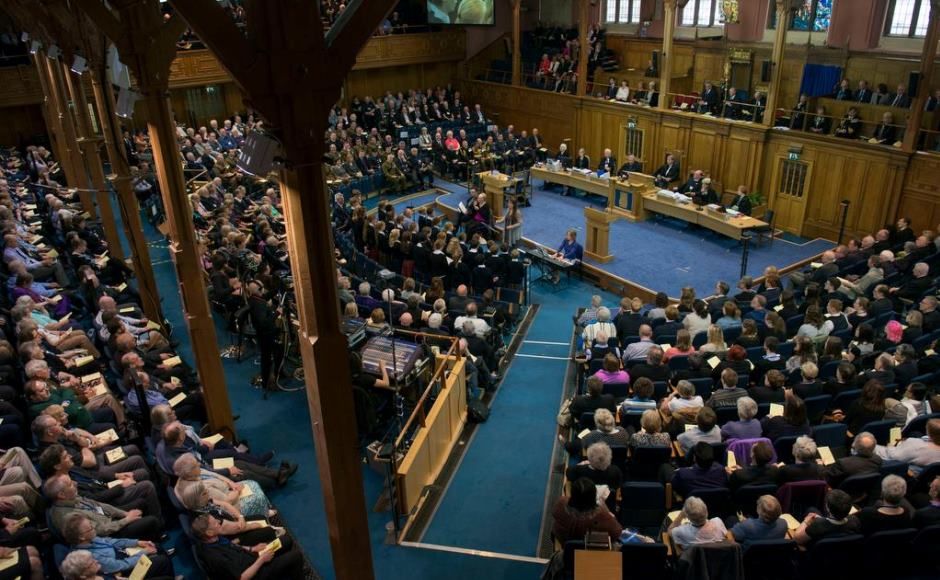Lord Lyon addresses the General Assembly on the role of ceremony
Published on 20 May 2023
A serving Lord Lyon, King of Arms, has spoken to the General Assembly for the first time explaining how his ceremonial role in the proceedings represents the relationship between the church and state.
The position oversees heraldry in Scotland and predates the formation of the Church of Scotland by at least 200 years.

However Rev Canon Joe Morrow did address commissioners around 50 years' ago whilst President of the National Council of Youth Fellowships and a member of St Margaret's Parish Church in Glenrothes.
He was there to petition the Assembly to allow young people to participate more in the governance of the Church of Scotland.
Mr Morrow's speech this year covered the symbolism of the pageantry at the General Assembly and how above all it reaffirms the supremacy of Jesus.
"The ceremonial aspects of the General Assembly are not about power, but rather about reminding us of the relationship between Church and State in Scotland, and above all about the supremacy of Jesus in the life of the Church," he said.
"The ceremonies that we carry out around the Lord High Commissioner at General Assembly time are concerned with values: the values of respect, hospitality and generosity.
"As the National Christian Church in Scotland, you express - through these ceremonies for the General Assembly and the Lord High Commissioner - the relationship and influence that you have with the Sovereign and with the State in general. That influence should never be underestimated.
"Part two of the Accession Council is one of the first acts that any new Sovereign has to complete. The new Sovereign makes a declaration and takes and subscribes to the Oath relating to the security of the Church of Scotland by virtue of Article 25 of the Act of Union 1707. The Oath has been taken by every monarch since George I in 1714.
"The presence of the Lord High Commissioner and the simple ceremonial around his or her presence, physically manifest in the separate gallery in which the Lord High Commissioner sits, clearly confirms the historical and present division of powers between the Church and State in Scotland. This Church is self-governing and its supreme authority is the General Assembly under Jesus Christ.
"This is reinforced annually by the presence and ceremonial of the Lord High Commissioner. The State and the Assembly come together on such occasions in ceremonial activity to celebrate the influence this Assembly has, not only within the Church, but within the wider aspects of Scottish life, and the respect which its views have and are held within Scottish society in general. By the Sovereign and the State.
"The ceremonies we carry out in a simple form are not about redundant aspects of Assembly life; they are about placing the Church and this Assembly at the centre point of influence and values within the structures of our wider society.
"These ceremonies, often expressed with colour and precision are about the story-telling of our Scottish history, as a Church and as a country, both past and present and into the future. I commend them to you as visible and living examples of how the Church influences the world around it."


